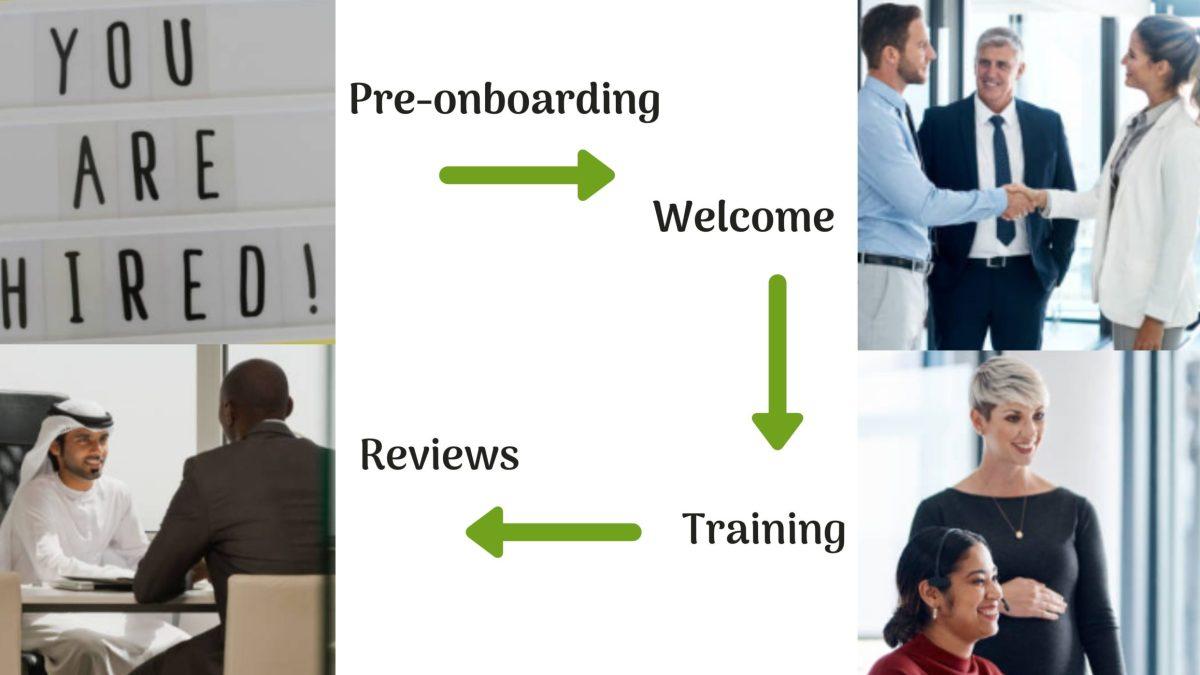Successfully Onboard New Employees to Improve Employee Retention

How Successfully Onboarding New Employees Improves Employee Retention
For most of us, our first day at work involved completing lots of paperwork, getting a computer set up and meeting a lot of people whose names you could not remember. That old style of onboarding simply does not work today.
How many people do you know that describe their first week at work as follows? They arrive super excited about their new role and company and spend the first day filling out paperwork and the rest of the week is spent watching other people work while they are trying to fit in and learn what they are supposed to be doing. During the week, they attend a classroom style induction talk which is filled with PowerPoint presentations and watching videos.
An employee lifecycle starts with recruiting, followed by onboarding, development, retention and lastly, separation. Effective HR departments ensure each stage is supported to be successful.
Onboarding belongs to all business stakeholders. When designing and implementing an integrated program, HR needs to engage and train these stakeholders to optimize the onboarding experience as it takes time and commitment.
Use the onboarding process to involve creative and ambitious employees as this is a great opportunity for them to contribute to the organization.
4 essential elements for a successful onboarding process:
Strategic – ensuring employees know they will contribute to the organization’s mission, vision and goals.
Operational – ensuring employees have the right tools and knowledge to perform their role.
Social – new employees build relationships with their colleagues, managers and feel part of the organization.
Measurement – metrics to assess how effective the onboarding process is.
Onboarding vs Orientation
Many organisations and HR functions confuse onboarding and induction (sometimes referred to as orientation). The reality is that onboarding is a more in-depth process of fully integrating a new employee into the organization’s culture and ways of working and their role. Onboarding programs will vary depending on the business size, culture and industry. Onboarding can take up to three months with regular two-way constructive feedback discussions.
By focusing on onboarding new hires rather than simply taking them through an orientation program will enable them to settle in quicker and start to feel more engaged. Give them real work to do and team them up with an expert in their department or someone they will be working closely with if the organization is smaller. This will create a safe environment for them to feel that they are already contributing and learning.
Onboarding Remotely
Given social distancing and working from home business models, organizations have had to adapt to onboarding from a safe distance or remotely. Focusing on the purpose is more important than the process. The main aim of onboarding is to help new employees acclimatize to the company, it’s environment, their new team and role.
Go paperless – centralize new joiner paperwork and enable forms to be completed online.
Set up the right platforms – it is still possible for teams to meet “in person” and in real-time through video conferencing and internal messaging platforms. Secured document sharing tools like SharePoint and Dropbox are ideal for teams to collaborate effectively.
Create online learning – virtual training is the most effective way of providing employees with materials they will need to learn about the company and documents that they need.
It is always a bit daunting for anyone starting a new job and effective onboarding is especially important for remote employees as they will take a little while longer to settle in.
4 factors to consider when implement an effective onboarding program:
When will the onboarding start and how long will it last?
What role will HR, coworkers and managers play in the onboarding?
What goals do you want to set for new employees?
How will you gather feedback and measure its success?
Onboarding is a process of integrating a new employee into their role, team and organization and it starts when the employee accepts the job offer. Employee engagement is based on the personal connection people have with their managers and coworkers.
There are 6 stages to successful onboarding:
Pre-boarding before the employee joins the organization
1st day – new employee welcome
1st week – introduction to the company, colleagues and role
1st month – education and training to learn the systems, processes and how the company works with weekly feedback sessions.
2nd month onwards – most employees start working independently with some on the job training with fortnightly feedback sessions.
6th month – final feedback session and sign off.
Most employees are focused on finding their feet, establishing their place in the organization, building relationships and making a positive contribution.
It is important to make new employees feel very welcome and are not left alone so assigning a buddy to them will help to reduce fear and anxiety. It is worth selecting buddies based on personality fit and chemistry.
Once new employees have started establishing themselves in the company, their focus will be on improving their skills and knowledge.
Manager involvement plays a key part in ensuring that employees are going in the right direction. Career development conversations should be a part of one-to-ones to support employee growth.
During this time, employees should have a clear understand of the company’s strategic objectives and feel valued for their contribution. Transparency and trust are important throughout the employee’s tenure. Feedback should be in real-time and based on specific outcomes rather than generalized praise at the annual review meeting.
4 metrics that HR should use to measure the success of the onboarding process:
New employee turnover – measuring retention during the onboarding phase is the most significant metric. It is important to determine how the onboarding process is impacting the employee’s tenure at the company. Are you able to identify flight-risk employees during this phase?
How long is it taking for new employees to start generating value? It is acceptable for new hires to take time to settle into the company and role. Productivity analytics tools which measure real-time productivity can provide data to assess who is becoming self-productive to meet expected performance levels and those that may still require training and further support.
Training completion – a key element of onboarding is training and measuring the completion rate will give you an insight into whether employees are not being given enough time to complete the training, or there is a lack of commitment or that employees are not aware that the training is available.
Management satisfaction – onboarding is not a one-way process – hiring managers should also be satisfied with the quality of candidates, pre-boarding smoothness and employee engagement. Feedback about the onboarding process is important for HR as this will help to identify areas of improvement, what is working well. Are the new employees raising queries about topics that should already have been covered?
Onboarding is one of the most crucial stages for all employees. It is more than just half a day of new hire orientation – it is the entire process of an employee getting acclimated to the organization and their role.
Measuring your onboarding practices is a good way to assess how effective the onboarding program is.
What tips do you have for successfully onboarding new employees? Please share your tips in the comments below.
Want to implement an effective onboarding program? We are helping organizations of varying sizes reduce their employee turnover and improve their first-year retention by implementing the right onboarding program for their business and culture.
Contact us or call +971 552 167 567 for an initial discussion on how we can help you save time and money by recruiting the right people and effectively onboarding them.
